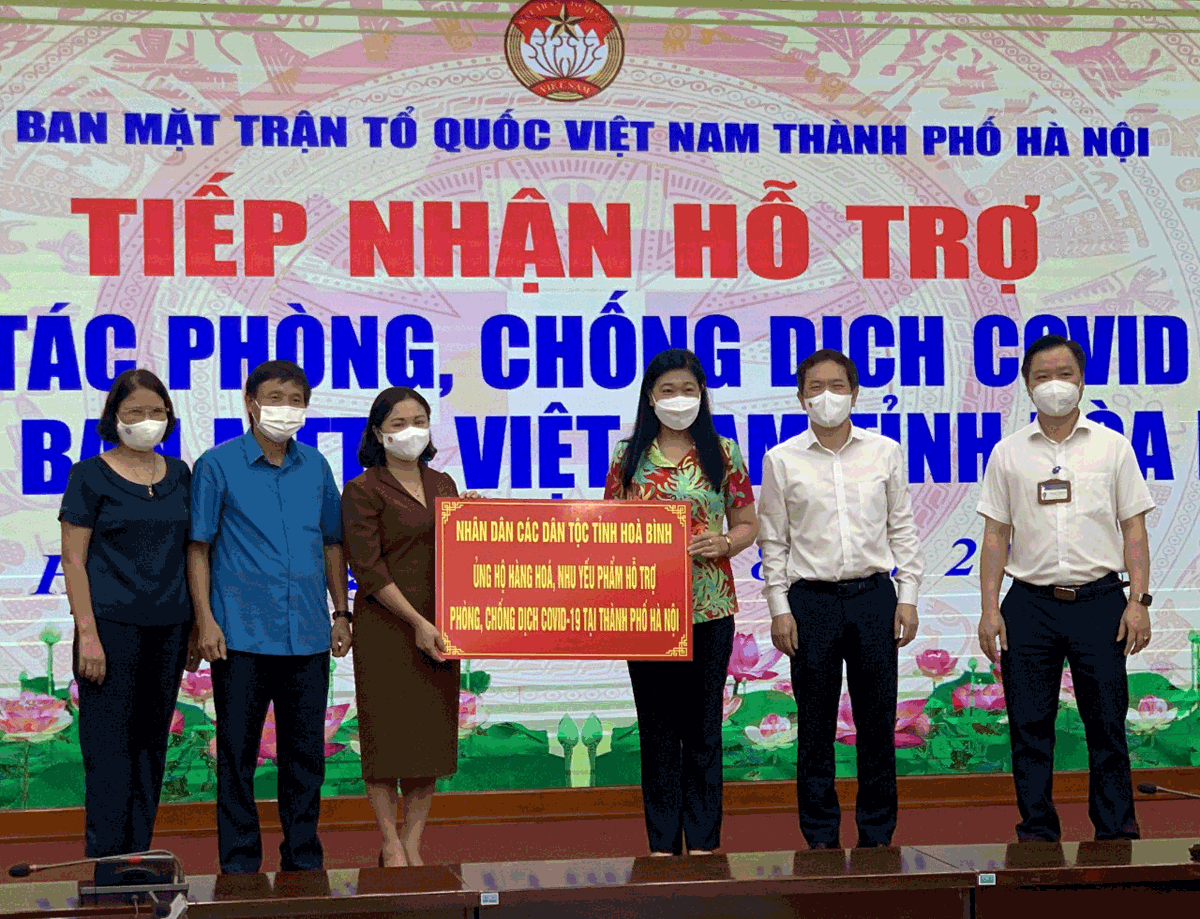
(HBO) - In the afternoon of August 13th, the leaders of the Provincial Fatherland Front handed over 70 tons of goods and necessities to support the capital in the prevention and control of Covid-19 pandemics through Hanoi Fatherland Front. These goods originated from the source of calling and mobilizing people from all walks of life in the province to support people in epidemic areas and were extracted from the province's Fund for Covid-19 Prevention & Control.

The leaders of the Provincial Fatherland Front are giving over 70 tons of goods and necessities to support the capital in the prevention and control of the Covid-19 pandemics through Hanoi Fatherland Front.
The donated goods included 65 tons of rice and more than 5 tons of necessities (instant noodles, rice noodles, peanuts, pumpkin...) with the hope that Hanoi would soon overcome difficulties in the epidemic prevention and control. Hoa Binh province hoped that the donated goods would be promptly delivered to support the poor, the self-employed, the students who were "stucka” and Hoa Binh people having difficulty implementing social distance in Hanoi.
Making a speech at the receipt of the goods the, Chairman of the Hanoi Fatherland Front, Ms. Nguyen Lan Huong thanked the attention, sharing and attachment of the people and the officials of Hoa Binh province for the capital. Hanoi Fatherland Front would coordinate with Hanoi Capital High Command of the Poeple’s Army to promptly transport these goods and necessities to the poor and disadvantaged people facing difficulties. They would coordinate to organize a "zero dong market” in the blocked and difficult places to support the disadvantaged with the goal that every poor person would be supported.
The Standing Board of the Hoa Binh provincial Party Committee has agreed in principle on a proposal by the Standing Board of the Party Committee of Hoa Binh city to gather feedback on the city’s 1:2000 zoning plan, which forms part of its broader urban development strategy.
Hoa Binh province has made notable progress in public administration reform and digital government development, with the satisfaction index among citizens and businesses reaching over 84%, according to recent government evaluations.
Thanks to great efforts by local authorities in recent times, the governance and public administration performance of Mai Chau district has been significantly improved.
In the afternoon of June 6, the Party Committee, the People's Council, the People's Committee and the Fatherland Front of Lac Son district solemnly held a meeting to celebrate the 139th anniversary of the district's founding (1886–2025) and the 79th anniversary of the establishment of the district's Party Committee (1946–2025). There was the attendance of Mr. Bui Van Thang, the Vice Chairman of the Provincial People's Council; Mr. Quach Tat Liem, the Vice Chairman of the Provincial People's Committee; Ms. Dang Bich Ngoc, the Deputy Head of the National Assembly Delegation of the province; as well as the former leaders of the province and district through various periods, who are the natives of the district.
Implementing the Politburo’s Resolution No. 57-NQ/TW on breakthroughs in science – technology, innovation, and digital transformation is a golden opportunity for the northern mountainous province of Hoa Binh to renew growth model, improve competitive edge and shorten digital gap.
Resolution 57-NQ/TW, issued by the Politburo on December 22, 2024, identifies sci-tech, innovation, and digital transformation as strategic breakthroughs to build a developed and prosperous nation. In Hoa Binh province, this spirit is not just a slogan, it’s being put into action through concrete initiatives that form a "new development triangle”: digital citizenship, digital economy, and digital administration.



